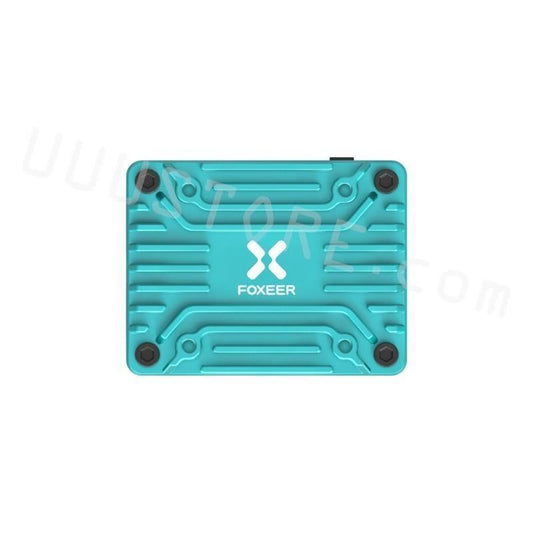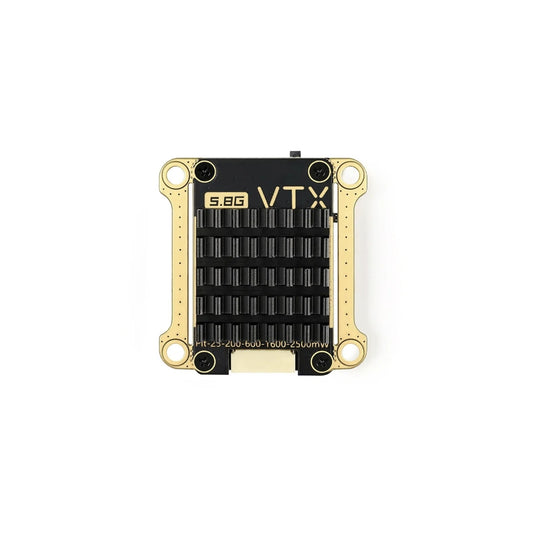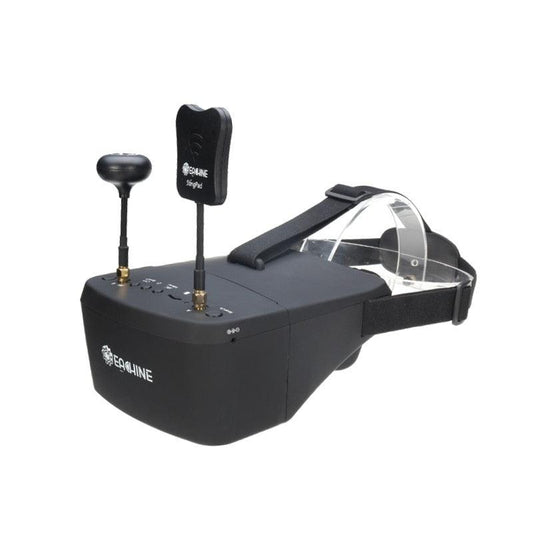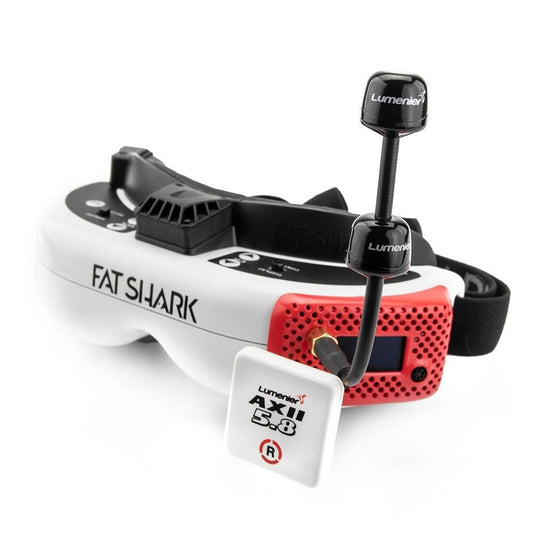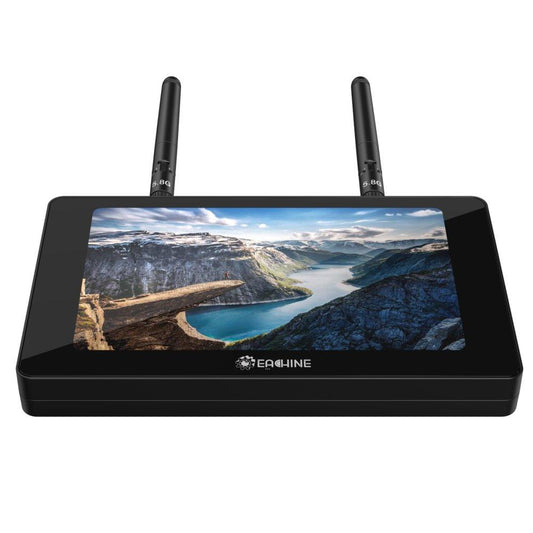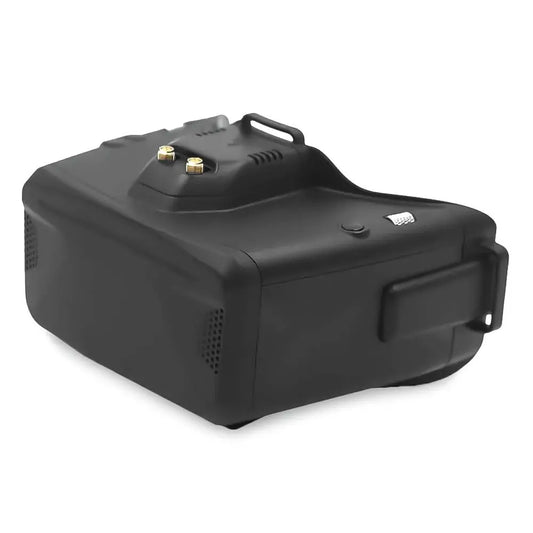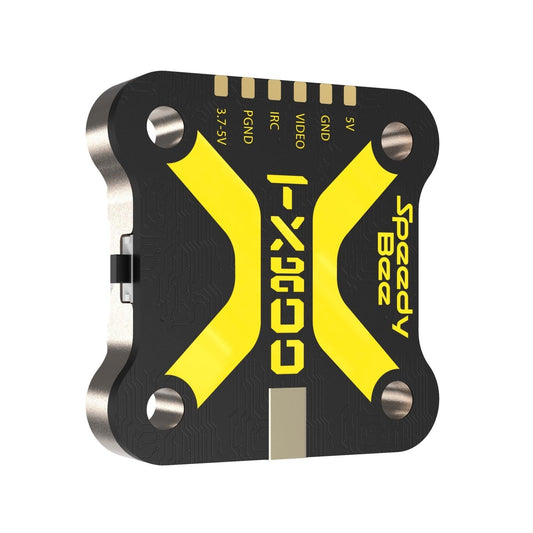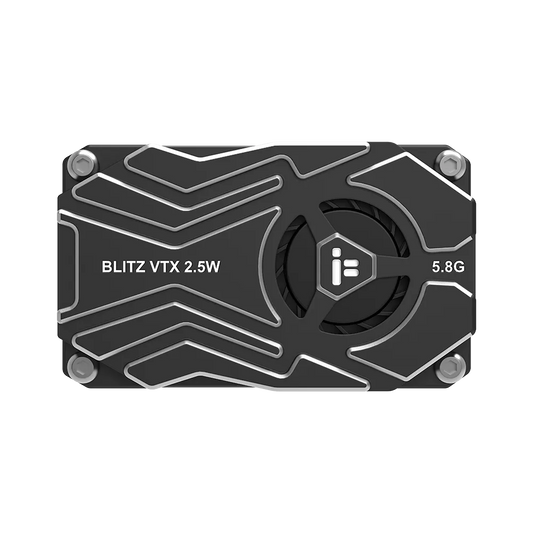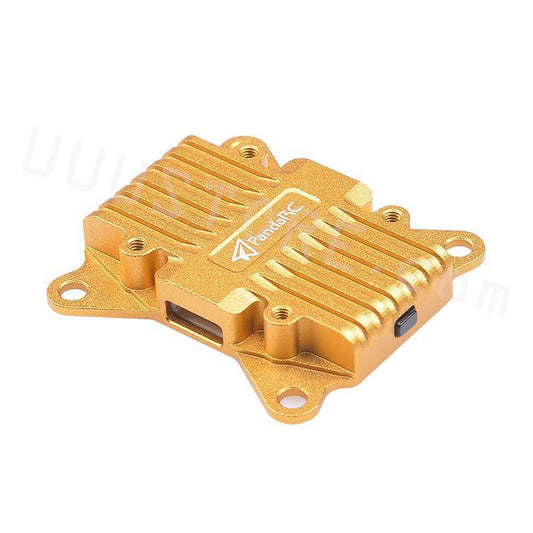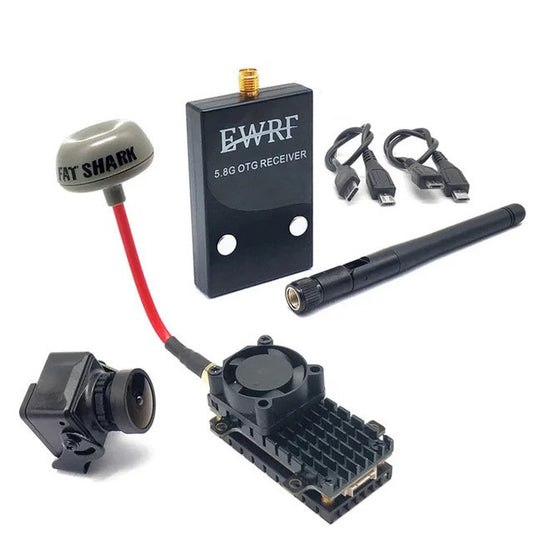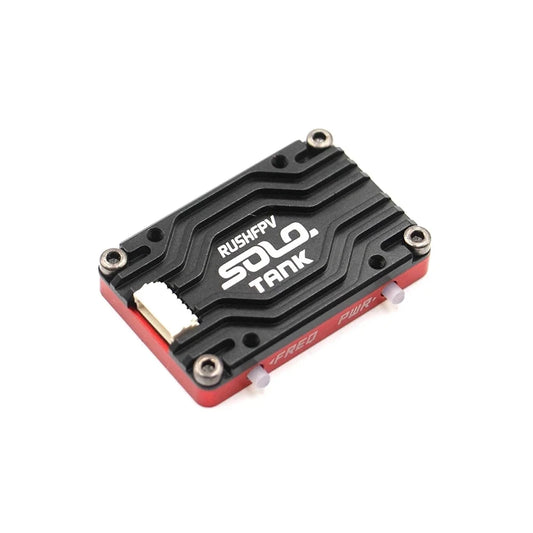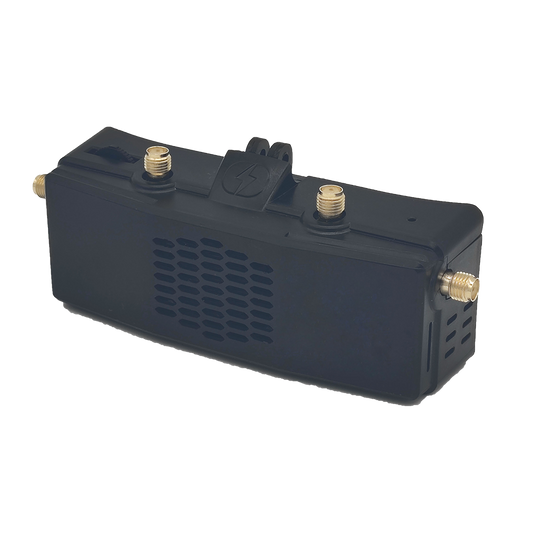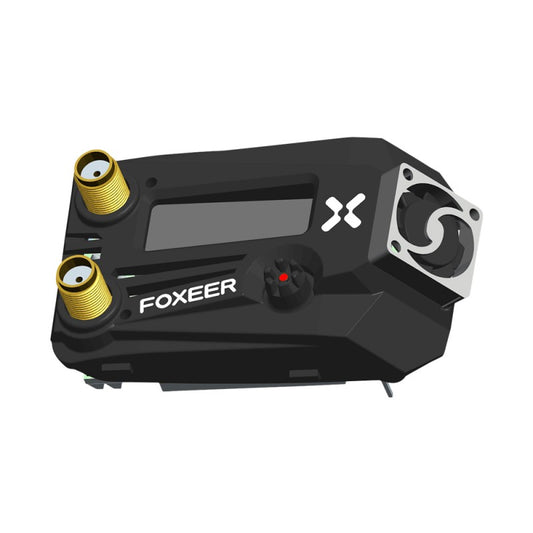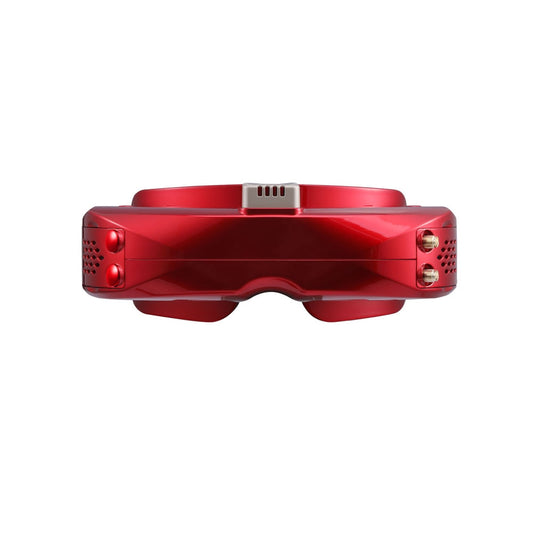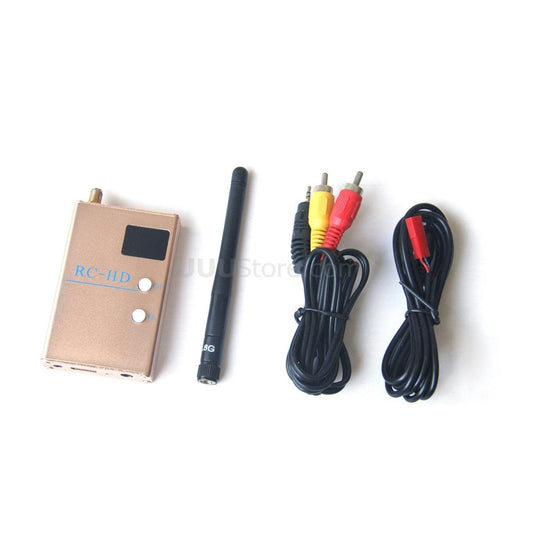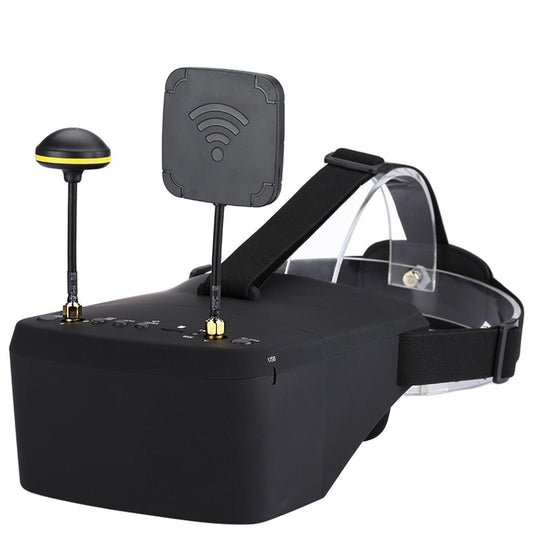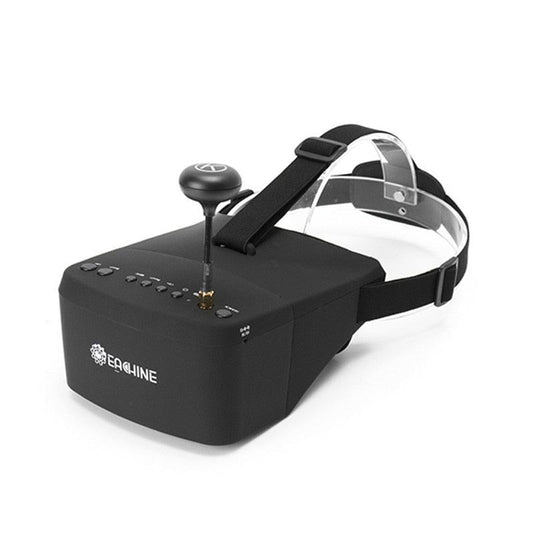-
Rushfpv RUSH TANK MAX SOLO VTX - 5.8GHz 2.5W 48CH High Power Video Transmitter with CNC shell for RC FPV Long Range Fixed-wing Drones DIY
Regular price $73.34 USDRegular priceUnit price per -
Foxeer Reaper Extreme Transmitter - 5.8GHz Pit/25mW/200mW/500mW/1.5W/2.5W 2500mW 40CH VTX FPV Transmitter For Long Rang RC Drone Airplane
Regular price $81.93 USDRegular priceUnit price per -
GEPRC RAD VTX - 5.8G 2.5W PitMode 2500mW Output Long Range Transmitter Tramp Support Microphone RC FPV Racing Drone
Regular price $60.85 USDRegular priceUnit price per -
Eachine EV800D FPV Goggle - 5.8G 40CH 5 Inch 800*480 Video Headset HD DVR Diversity FPV Goggles With Battery For RC Model
Regular price From $122.35 USDRegular priceUnit price per -
RUSHFPV Cherry 2 II 5.8GHz 1.8dBi FPV Antenna LHCP RHCP – SMA/MMCX/UFL Options
Regular price From $10.11 USDRegular priceUnit price per -
FatShark Dominator HDO2 FPV Goggles - with Immersionrc Rapidfire and Lumenier 5.8g AXII Patch And lumernier Double AXII ANTENNA for FPV Drone
Regular price From $42.60 USDRegular priceUnit price per -
AKK Alpha 5 5W VTX - 5.8GHz 80CH 1w/2w/3w/5w Power Switchable FPV Video Transmitter
Regular price From $120.00 USDRegular priceUnit price per -
Eachine Moneagle 5 Inch FPV Monitor - IPS 800x480 5.8GHz 40CH Diversity Receiver 1000Lux FPV Monitor HD Display For RC Drone Radio Controller
Regular price From $112.51 USDRegular priceUnit price per -
SKYZONE Cobra X V4 Goggle - 1280x720 5.8G 48CH Receiver Upgrade Of V2 Head Tracker DVR FPV Goggles Helmet With HDMI For FPV Drone
Regular price From $173.77 USDRegular priceUnit price per -
RD945 Skyzone ISM 5.8G Wireless Dual Receiver & TS832 Transmitter 5.8GHz 48CH VTX For 250MM FPV Multicopter RC Toys Part
Regular price From $28.66 USDRegular priceUnit price per -
Skydroid UVC Single Control Receiver - OTG 5.8G 150CH Channel FPV Receiver Video Transmission Downlink Audio For Android phone
Regular price $39.86 USDRegular priceUnit price per -
SpeedyBee TX800 5.8G VTX - 5V 48CH 200mW / 400mW / 800mW RunCam Maximum Output Long Range FPV Video Transmitter
Regular price From $36.95 USDRegular priceUnit price per -
AKK Alpha 10 10W VTX - 5.8GHz 80CH 10W 7W 5W 3W 1W Power Switchable FPV Video Transmitter Support Smart Audio
Regular price From $259.00 USDRegular priceUnit price per -
TBS UNIFY PRO32 HV (MMCX) VTX - 5G8 5.8G 8.7g 1000mW 1W Power HV Video Transmitter
Regular price $65.00 USDRegular priceUnit price per -
iFlight BLITZ Whoop 5.8G 2.5W VTX - with MMCX Interface 25.5x25.5mm Mounting pattern for FPV Parts
Regular price $73.46 USDRegular priceUnit price per -
FUAV UVC Dual / Single Antenna Control OTG - 5.8G 150CH Full Channel FPV Receiver W/Audio for RC Drone Parts
Regular price From $40.34 USDRegular priceUnit price per -
PandaRC VT5804-BAT 5.8G 40CH 2500mW 2.5W Adjustable OSD FPV VTX 6-36V 20X20mm 30X30mm for RC FPV Drone Long Range Airplane
Regular price $59.67 USDRegular priceUnit price per -
ACASOM 2.4G 5.8G Dual Frequency Drone Signal Booster Amplifier PCBA
Regular price From $35.00 USDRegular priceUnit price per -
Vrriis WL009 - 250 Meters 2.4G+5.8G 1080P@60HZ Wireless HDMI Extender Transmitter and Receiver
Regular price From $79.00 USDRegular priceUnit price per -
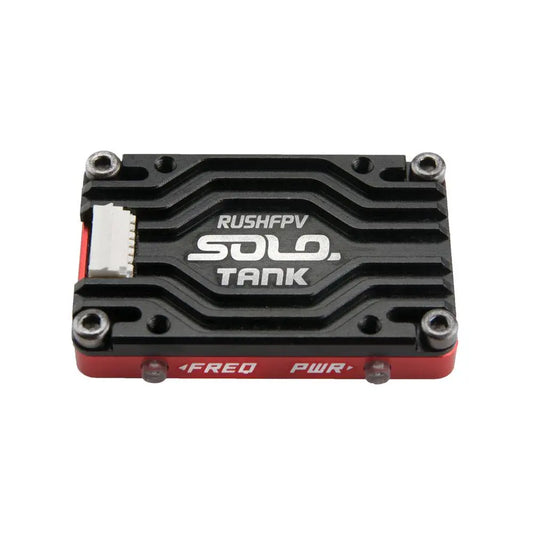
RushFPV Rush Tank SOLO 1.0W 5.8GHz VTX - 5V 1A 48CH PIT/25/400/600/800/1000mW FPV Video Transmitter
Regular price $49.99 USDRegular priceUnit price per -
5.8Ghz 48CH 2W VTX - Long Range FPV Wireless Viedo Transmitter and EWRF UVC OTG Receiver + CMOS 1200TVL 2.5mm FPV Camera
Regular price $78.40 USDRegular priceUnit price per -
RUSHFPV RUSH TANK SOLO 1.6W 5.8G VTX - 5.8GHZ 48CH PitMode Pitmode 25mW 400mW 800mW 1600mW Adjustable 2-6S Microphone for FPV Long Range Drone
Regular price $69.27 USDRegular priceUnit price per -
HDZero VRX - Digital HD Receiver Module 720P 60FPS 5.8GHZ
Regular price $259.00 USDRegular priceUnit price per -
Foxeer Wildfire 5.8GHz 72CH Dual Receiver - Support OSD Firmware Update for Fatshark FPV Goggles
Regular price $115.00 USDRegular priceUnit price per -
AKK 5823S VTX - 48CH 5.8GHz 200MW FPV Transmitter for FPV Drone
Regular price $29.99 USDRegular priceUnit price per -
AKK Alpha 8 8W VTX - 5.8GHz 80CH 8W 5W 3W 1W Power Switchable FPV Video Transmitter
Regular price From $159.00 USDRegular priceUnit price per -
AKK X2P/X2 5.8Ghz 40CH VTX - 0.01mW/25mW/200mW/500mW/800mW Switchable FPV Video Transmitter Compatible Betaflight OSD FC
Regular price From $18.28 USDRegular priceUnit price per -
TBS UNIFY PRO32 NANO 5G8 V1.1 VTX - 25mW 100mW 400mW 500mW 5.8G Video Transmitter
Regular price $75.00 USDRegular priceUnit price per -
10W 20W Anti Drone module - DC 28V 433Mhz 1.5Ghz 2.4Ghz 5.2Ghz 5.8Ghz for Anit Remote control 2.4G WIFI Bluetooth 5.8G module Anti Drone Device
Regular price From $105.02 USDRegular priceUnit price per -
SKYZONE SKY04X V2 FPV Goggles - OLED 5.8G 48CH Steadyview Receiver 1280X960 DVR FPV Goggles with Head Tracker Fan for RC Airplane Racing Drone
Regular price $681.99 USDRegular priceUnit price per -
5.8GHz High Gain Circular Polarized Transmitter Four Leaf Clover Antenna For Professional FPV Racing Drone
Regular price $9.67 USDRegular priceUnit price per -
Skyzone FPV 5.8G Receiver - 5.8GHz 48 Channels RC-HD Video Receiver 1080P HDMI Output & A/V and Power Cables For FPV Racing Drone
Regular price From $53.14 USDRegular priceUnit price per -
JHEMCU VTX20-600 Transmitter - 5.8G 40CH PitMode 25mW 100mW 200mW 400mW 600mW Adjustable VTX 7-26V 20X20mm for FPV RC Racing Drone
Regular price From $31.41 USDRegular priceUnit price per -
EV800D 5.8G 40CH FPV Goggles - 5 Inch 800*480 Video Headset HD DVR Diversity FPV Glasses With Battery For RC Model RC FPV Drone
Regular price From $100.83 USDRegular priceUnit price per -
Eachine EV800 5 Inches 800x480 FPV Video Goggles 5.8G 40CH Raceband Auto-Searching Build In Battery
Regular price From $79.18 USDRegular priceUnit price per -
ALIENTECH DUO 3 Signal Booster 2.4G/5.2G/5.8G Range Extender for DJI Mavic 3 Pro, Mini 4 Pro, Air 3, Autel, Parrot FPV
Regular price From $1,379.56 USDRegular priceUnit price per$0.00 USDSale price From $1,379.56 USD

